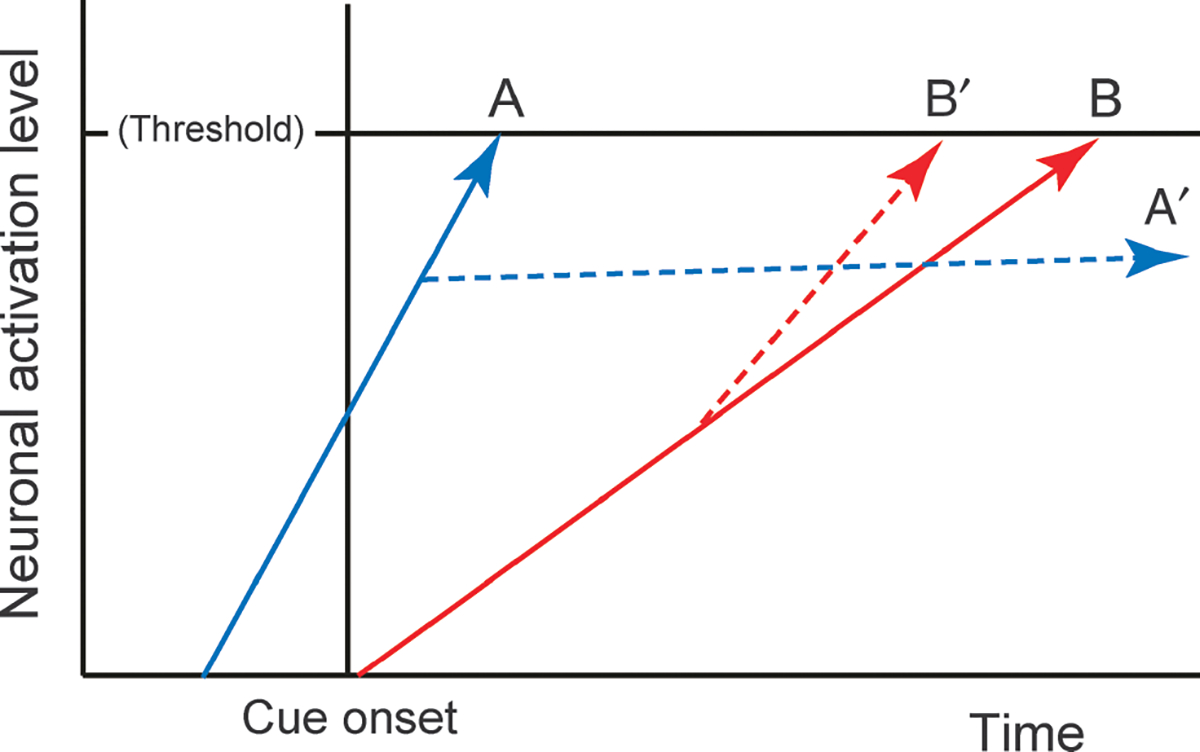Fig. 1.

Schematic illustration of fixed-threshold accumulator model in the context of overcoming habitual prepotencies. A motor response is generated when neuronal activation grows and reaches the response threshold. A, habitual response; B, non-habitual response. A putative switching mechanism inhibits or delays neural processes for the habitual response (A′) and boosts those for the non-habitual response (B′). Note that the slope is steeper for A than for B.
